DESIGN BRIEF
The main design concept is matching restaurant or matching other users with the user. This application will show a list of either matched restaurant or matched other users(Yummichers) depending on user’s choice. There are four components of functionality to support this concept:
01. Asking user’s background and food preference
02. Matching restaurants
03. Matching other users (Yummichers)
04. Managing user’s information.
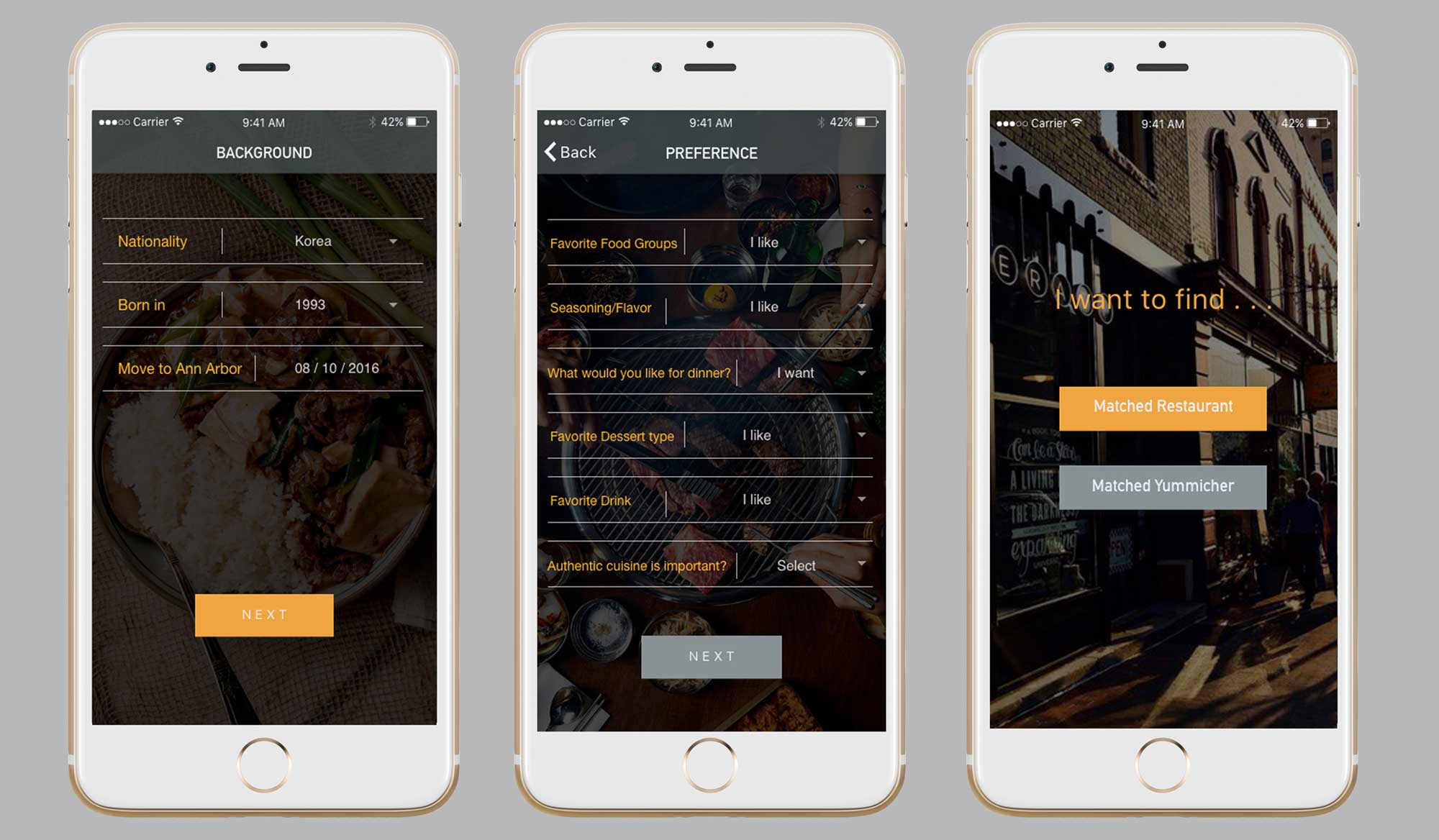
Asking user’s background and food preference

Showing a list of matched restaurants
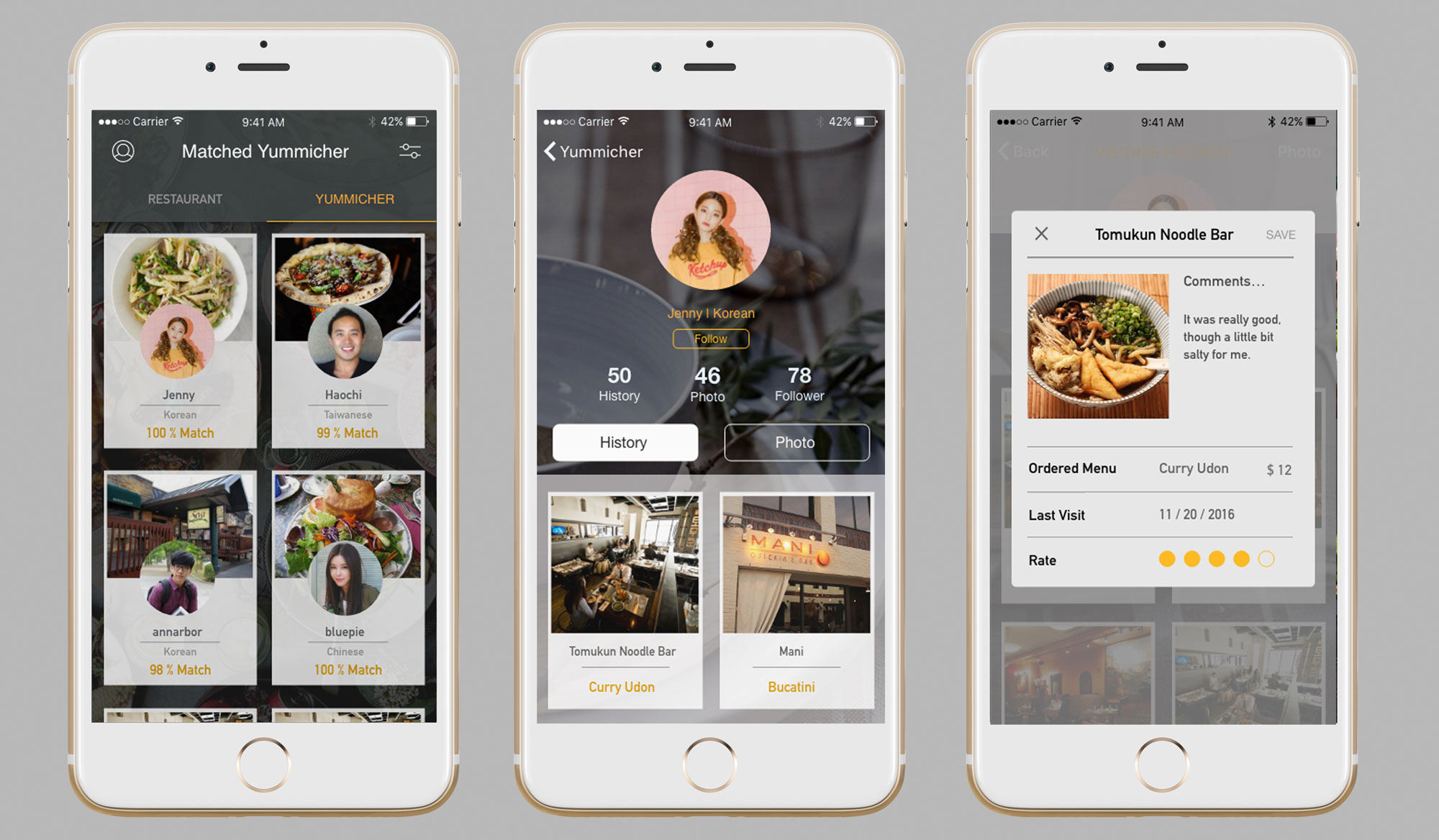
Showing a list of matched Yummichers
DESIGN PROCESS
01. Framing the Problem
Competitive Analysis & User Research
In this process, I examined pros and cons of other applications (Yelp, TripAdvisor) and solutions which deal with the same problem. Since I researched current solutions in this phase, I could understand the reason why the solutions success or fail. Based on this research, I could develop better ideas for possible solutions, but which is not overlapped with current solutions.
02. Ideation
Initial Sketch
Initially I sketched about eight possible solutions including restaurant ranking application, restaurant adventure application, and installation on the street. In this process, I came up with matching restaurant concept.

03. Finding a good solution
Storyboarding & Interview
Next, I sketched storyboarding for each possible solution. Then I conducted interviews with my target audiences. From the interview, I tried to find their “needs” which they even might not notice. I asked some questions which relate to their seeking restaurant information behavior. Also, I listened to their opinion about each possible solution. Based on user’s feedback, the solutions narrowed down to ‘matching restaurant’. However, I changed the design concept from matched restaurant to matched other people who have similar food preference. I came up with ‘matching other people’ concept based on the interviews.
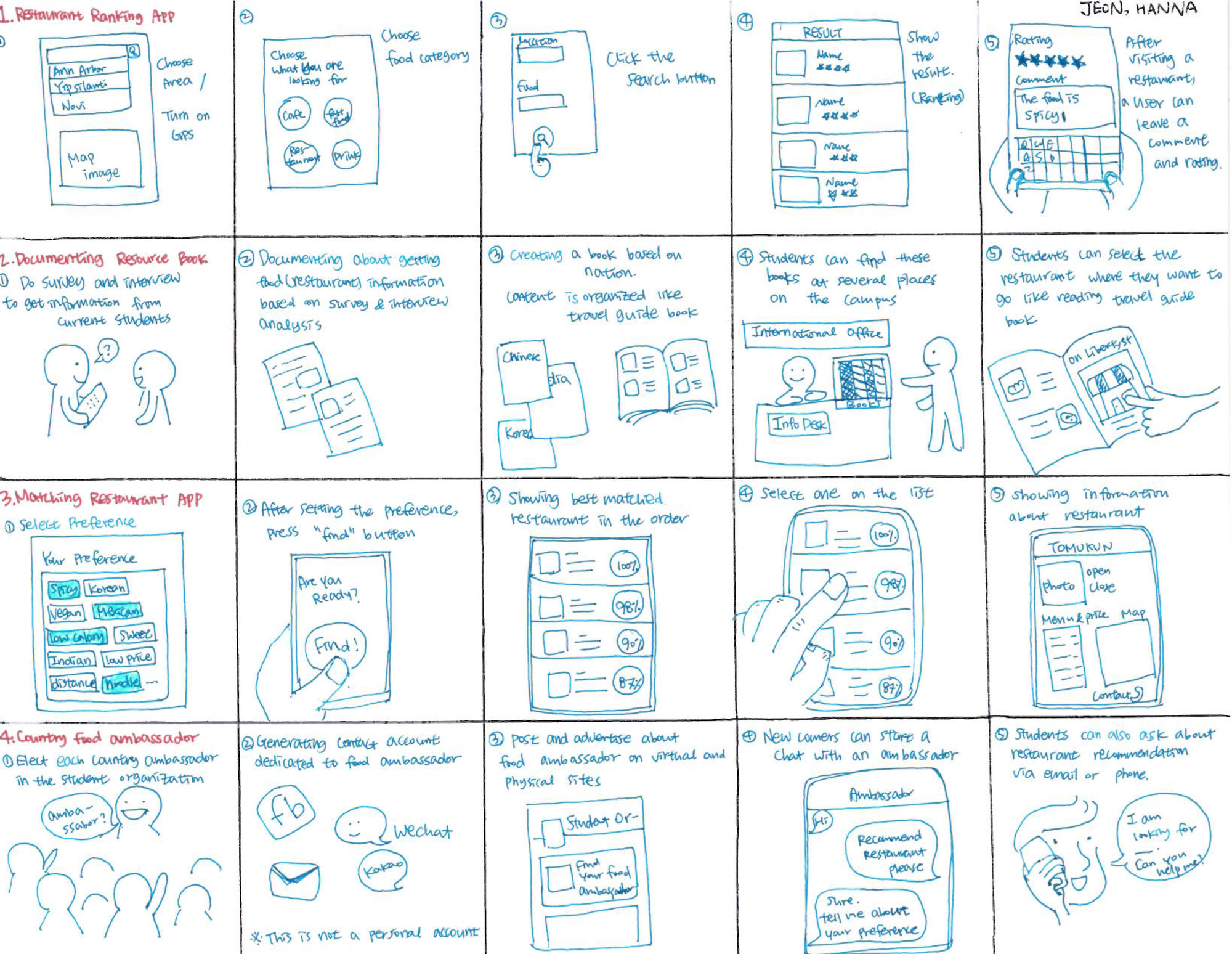
Personas
Based on findings from the interviews, I made personas in order to design the best solution for my target audience.

04. Refining the solution
Brainstorming features & Wireframe
I decided to refine the solution with 'match to other users who have similar taste' idea among other ideas. For the best matching, I developed three different key features for the idea, along with creating simple wireframes and developing rationales for each feature. My feature approaches were as followings:
1. Match to other users based on the user's response to food preference questions
2. Show the list of super users in order of the number of followers (Indirect matching)
3. Show random reviews or posts first which is connected to the user's information (Indirect matching)
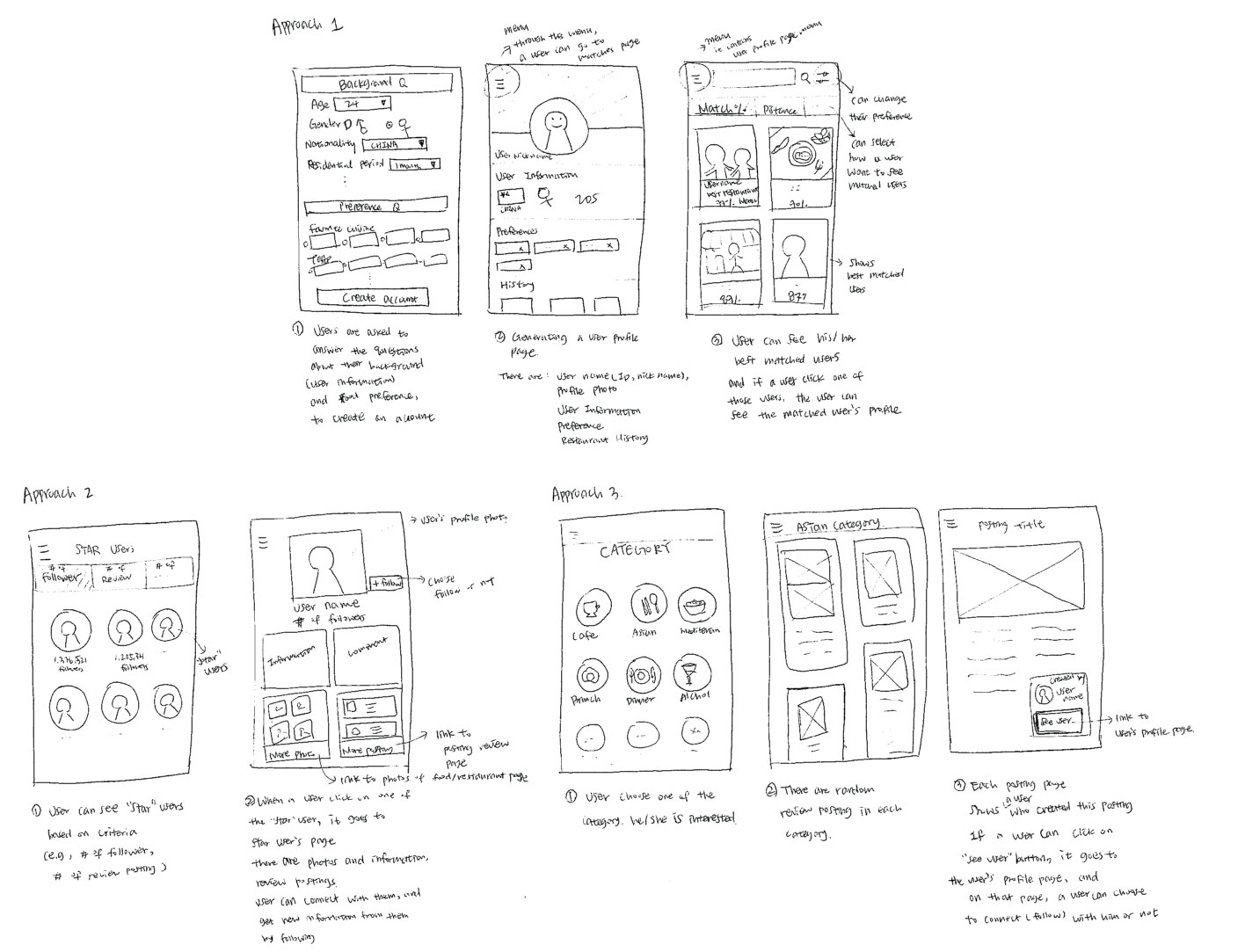
QOC Analysis
I ran a Design Synthesis & Defense Activity using Questions, Opinions Criteria (QOC) method. Through this method, I decided to implement the first feature approach, which is matching to other users based on user's food preference information.
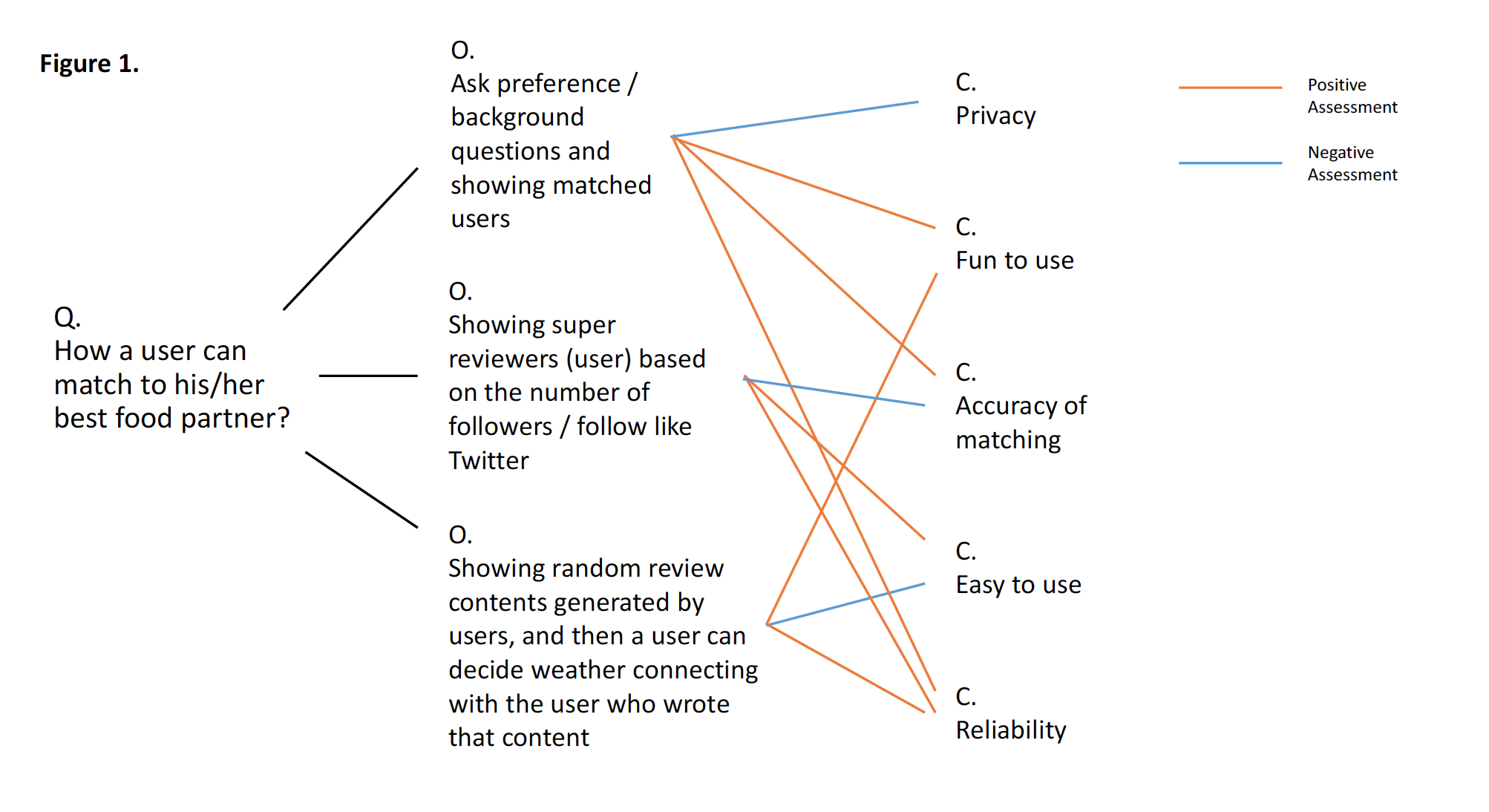
Paper prototype
I did paper prototype twice; it was because of feedback about my main feature. Target audiences were curious that if they can see a list of matched restaurants also. That was my initial solution approach. I thought that many features will harm my application, so I thought I had to decide to use only one main feature. However, after I interacting with users, I decided to support two main features: matching restaurants, and matching yummichers. Also, I got some feedbacks about interactions and screens.

Final design (Digital prototype)
Based on the feedbacks from the paper prototype, detailed designs in the digital prototype was refined. Some of the small features that were not in the previous process were developed. I also thought carefully about an interaction between each screen. In this process, I thought about the name of the application (Yummich), and visual design like design them (color, font).
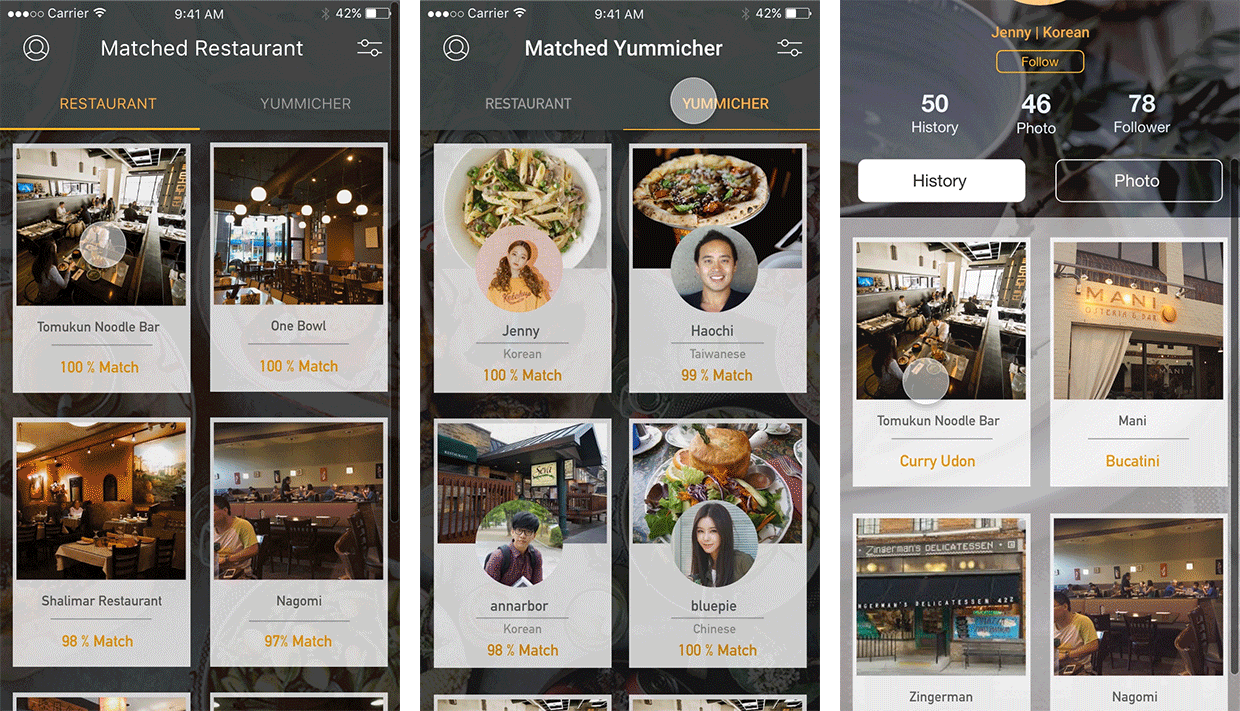
IMPACT
Ann Arbor is a diverse city of students from a different culture. The rate of international students increases annually. Adjustment life in the new environment is difficult, and problems related to food is the primary factor of adjustment. This application will contribute to new Asian students’ life adjustment by finding best restaurant for them. It can change their information search behavior. They might use this application first, instead of searching on Google or asking their friends.
In addition, Yummich might promote Asian international students’ community because it helps other new students by sharing their visited restaurants information. Since Yummich will be mainly updated by user generated information, yummichers have to have a somewhat responsibility to update information for future students. This sense of responsibility may increase their attachment towards to the Asian community.

